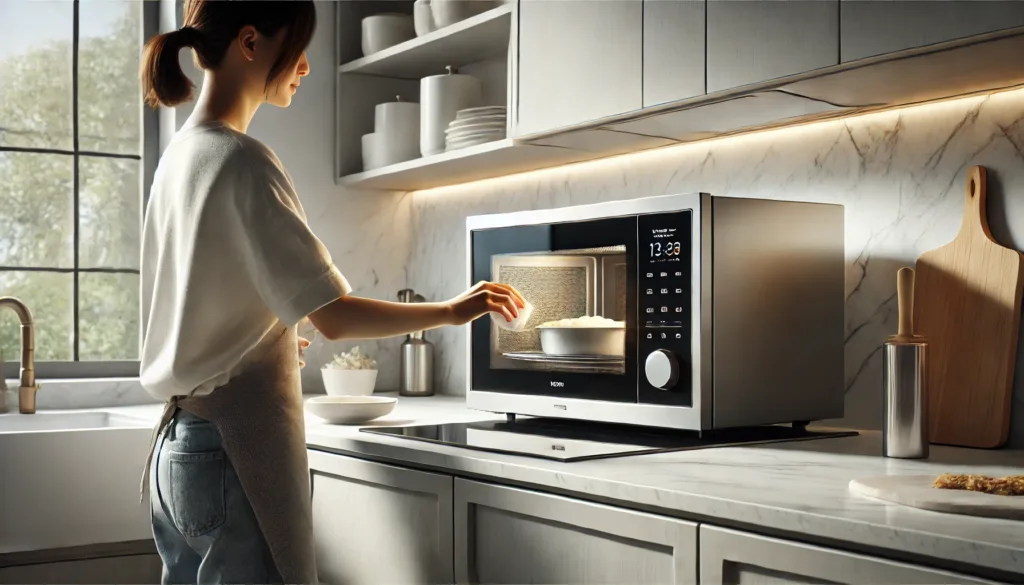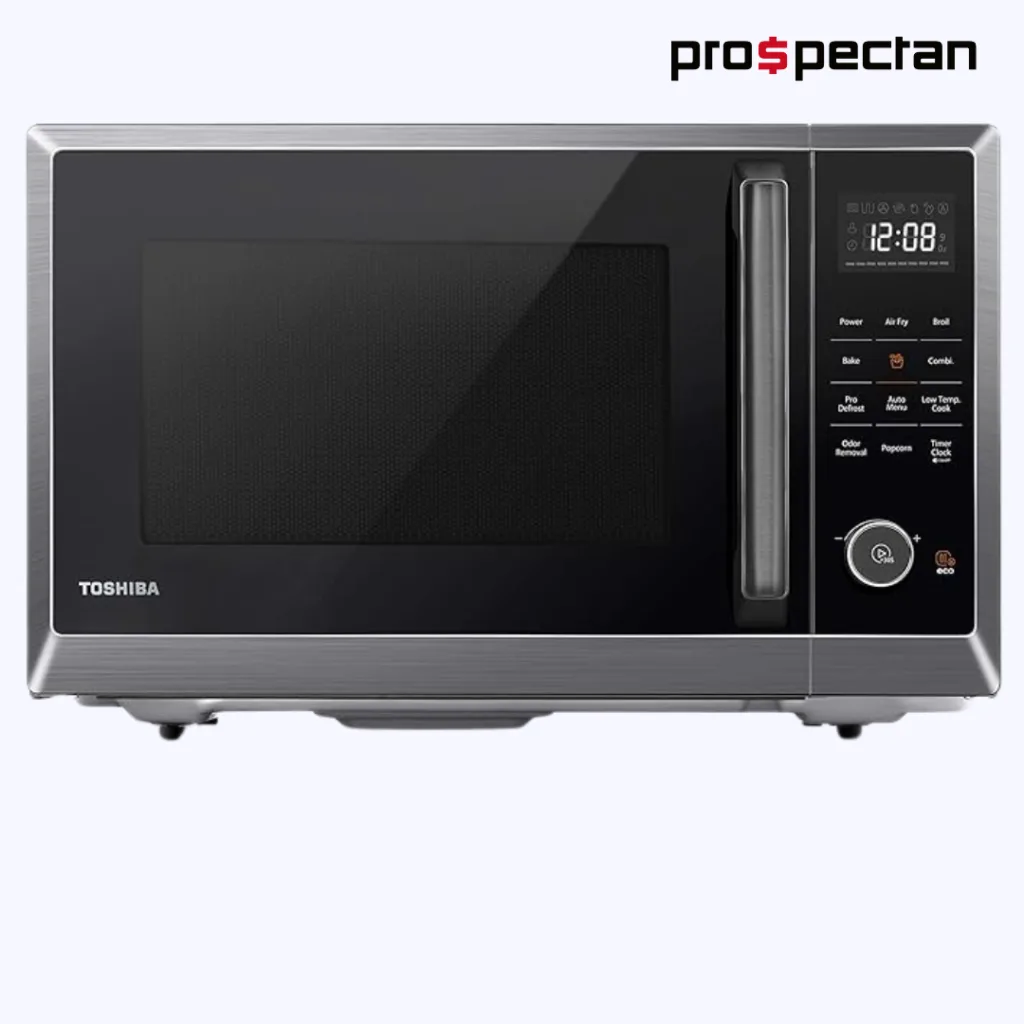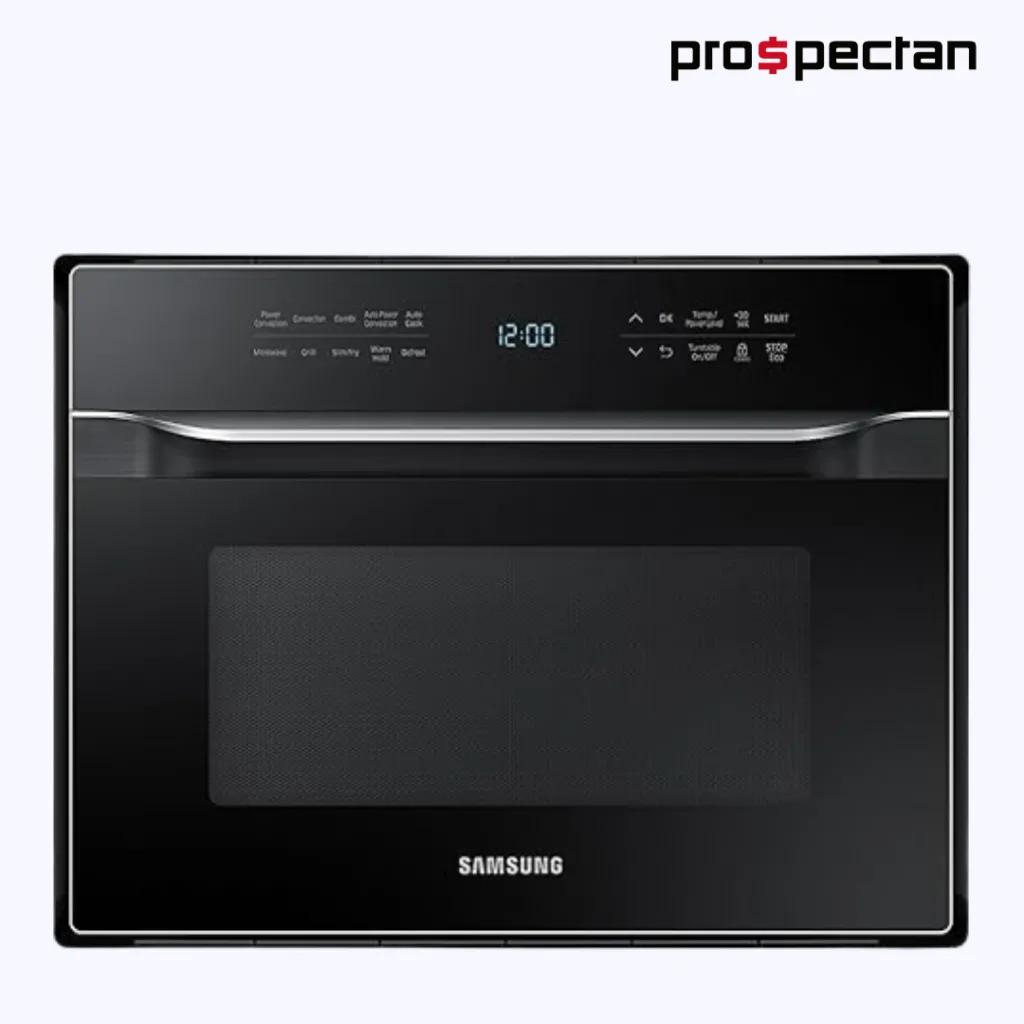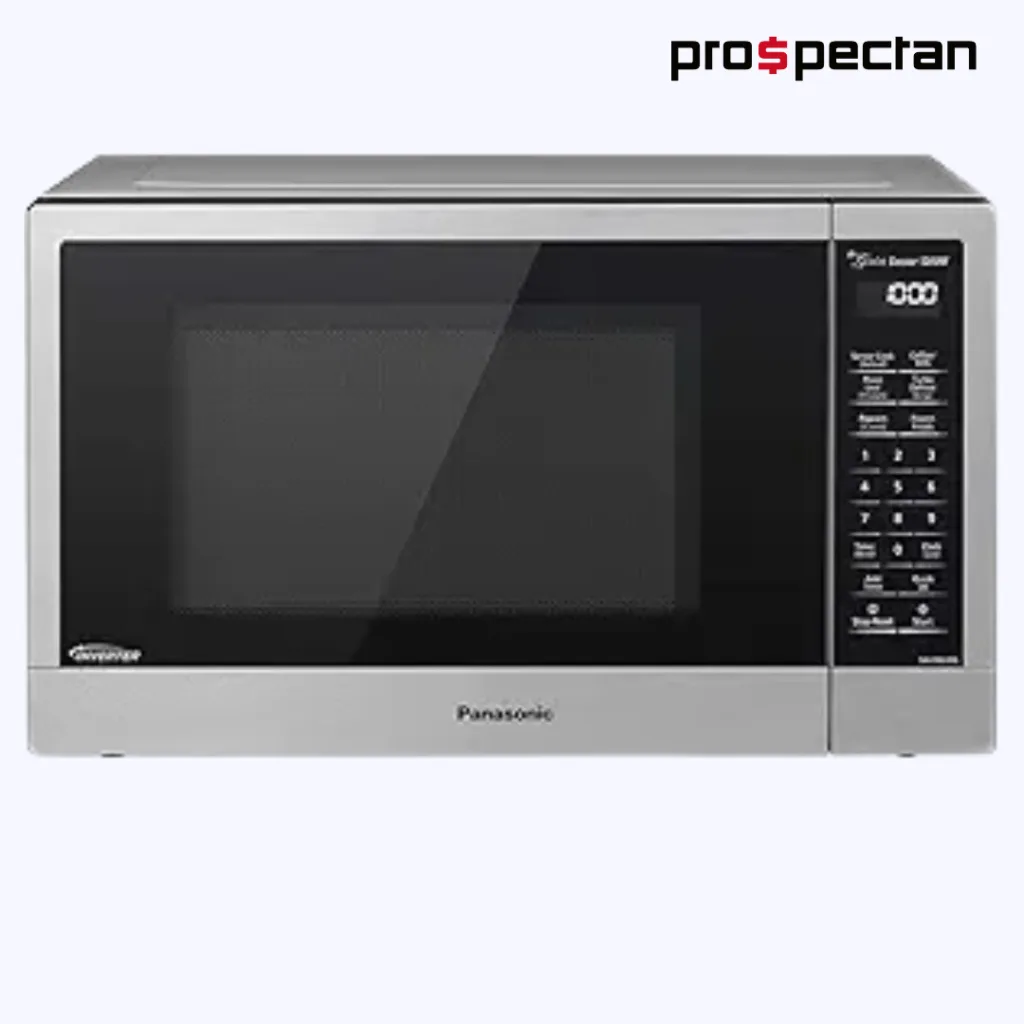Understanding Convection Microwave Ovens
A convection microwave oven is designed to perform both microwave and convection oven functions. Standard microwaves use electromagnetic waves to heat food from the inside, but convection microwaves go further by incorporating a heating element and fan. This setup enables hot air circulation within the appliance, ensuring even cooking from all sides. With these features, a convection microwave oven can bake, roast, grill, and crisp food, making it a highly versatile addition to any kitchen.
How Convection Microwave Ovens Work
The convection microwave works by combining microwave heating with a convection fan system. For standard microwave functions like reheating or defrosting, it uses electromagnetic waves to heat food quickly. When switched to convection mode, the heating element and fan create a consistent temperature, circulating hot air to cook food evenly—much like a traditional oven. This dual functionality lets users switch seamlessly from reheating a meal to baking, making it a multi-purpose appliance for all cooking needs.
Advantages of Convection Microwave Ovens
Convection microwave ovens bring significant advantages over traditional microwaves or standalone ovens. Here are some notable benefits:
- Time-Saving: Convection microwaves are faster than conventional ovens, combining the rapid heat of microwaves with the thorough cooking of convection ovens.
- Uniform Cooking: The fan and heating element ensure that food cooks evenly, preventing Convection microwave cookingundercooked spots or hot spots.
- Space Efficiency: A convection microwave offers the functionality of both in a single unit, so you won’t need to have both a microwave and an oven.
- Energy Savings: These appliances are more energy-efficient, as they reach cooking temperatures quickly and use less power for most cooking tasks.
Notable Features in Convection Microwave Ovens
Convection microwave ovens offer a variety of features that enhance their performance. Familiarizing yourself with these features will help you make an informed decision:
- Preset Cooking Programs: Many convection microwaves include preset programs for popular dishes, streamlining cooking for a range of foods.
- Grill Mode: Some models offer a grill setting for browning or crisping, giving added flexibility for recipes requiring a crispy finish.
- Child Lock: For households with kids, this feature prevents accidental operation, offering additional safety.
- Defrost Setting: The defrost mode evenly thaws food, avoiding partially cooked areas.
- Automatic Sensors: These sensors detect food moisture levels and adjust cooking times automatically, ensuring reliable results every time.
Understanding these features can help you choose a convection microwave that meets your cooking needs, making meal preparation easier and more enjoyable.
Convection Microwave vs. Traditional Ovens: Which Is Right for You?
When comparing a convection microwave to a traditional oven, consider the type of cooking you do most frequently. A traditional oven may be beneficial for large meals or batch cooking, while a convection microwave offers the advantages of quicker and more efficient cooking, particularly for smaller kitchens.
- Cooking Speed: Convection microwaves cook faster by combining microwave and convection technologies, perfect for quick meals.
- Energy Efficiency: Traditional ovens generally consume more energy because they take longer to preheat and cook. Convection microwaves are efficient, with shorter cooking times.
- Versatility: While traditional ovens focus on baking and roasting, convection microwaves can bake, grill, and reheat, offering all-in-one convenience.
For kitchens where space and efficiency are important, a convection microwave is a solid choice. However, if you cook larger meals frequently, you might still prefer a traditional oven’s capacity.
How to Choose the Right Convection Microwave Oven for Your Home
When shopping for a convection microwave, consider factors such as cooking capacity, power, and convenience features. Here’s what to keep in mind:
- Size and Capacity: Convection microwaves are available in various sizes. Assess your cooking requirements and counter space to select an appropriately sized model.
- Power Output: Power, measured in watts, impacts cooking speed. For efficient cooking, consider models with at least 800 watts.
- Preset Functions: Look for preset options if convenience is important. These settings make cooking common dishes easy and automated.
- Brand and Durability: Well-known brands like Samsung, LG, and Panasonic offer durable, high-quality convection microwaves with advanced features and reliability.
- Additional Features: Some models include a grill function, stainless steel interiors for easy cleaning, or self-cleaning options for low maintenance.
Energy Efficiency in Convection Microwaves
Energy efficiency is a priority for many, not only to save costs but also to reduce environmental impact. Convection microwaves are generally more energy-efficient than traditional ovens, as they reach high temperatures quickly, thus requiring less energy for heating. Additionally, many convection microwave models come with eco-modes or power-saving options, which reduce energy usage when the oven is on standby, further contributing to lower energy consumption.
Top Convection Microwave Brands to Consider
When considering a convection microwave oven, certain brands are recognized for their innovation and reliability. Here are a few popular models:
- Samsung PowerGrill Duo: Known for its dual grill feature, this model allows for precise roasting and grilling, providing added cooking versatility.
- Panasonic NN-CD87KS: This Panasonic model features a spacious interior and Turbo Defrost, which offers efficient and even heating suitable for various cooking tasks.
- LG NeoChef: With smart inverter technology, LG’s NeoChef series provides consistent power and control, ideal for households with diverse cooking needs.







